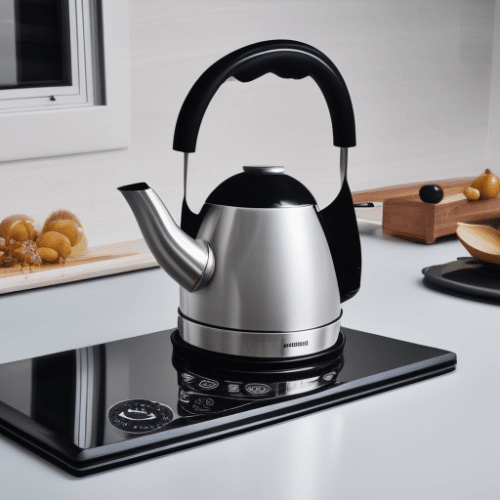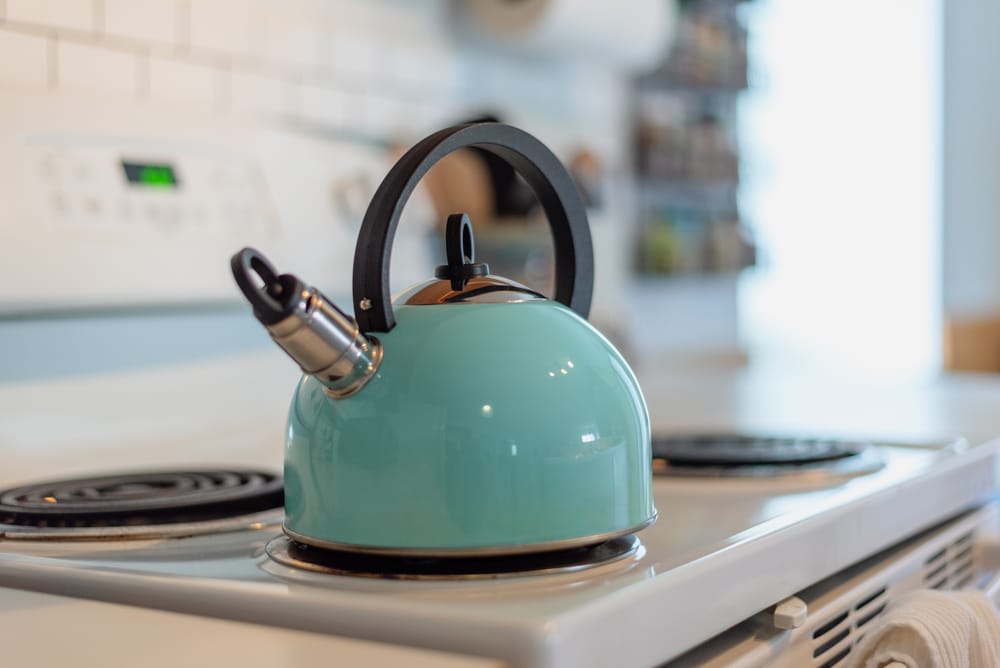Last Updated on
When it comes to the age-old debate of kettle vs teapot, you might be wondering which one is best for your home. Are electric kettles really as good as everyone claims? Is a teapot worth investing in or should you just stick with what’s already familiar? We’ll explore all these questions and more so that by the end of this blog post, you can make an informed decision on whether to choose a kettle or teapot for your hot beverage needs. Let’s dive into this comparison between kettles and teapots – who will come out on top?
Table of Contents:
- Kettle vs Teapot: What’s the Difference?
- Pros and Cons of Electric Kettles
- Pros and Cons of Teapots
- FAQs in Relation to Kettle vs Teapot
- Conclusion
Kettle vs Teapot: What’s the Difference?
Kettles and teapots are two of the most popular ways to make hot beverages. While they both serve the same purpose, there are some key differences between them that you should be aware of before making a purchase.
Design:
Kettles typically have an electric heating element inside, while teapots usually don’t. Kettles also tend to be more compact than teapots and come in a variety of shapes and sizes. Teapots, on the other hand, often feature intricate designs with handles for easy pouring and lids to keep the tea warm longer.
Purpose:
The main difference between kettles and teapots is their purpose; kettles are used primarily for boiling water quickly whereas teapots are designed specifically for brewing tea or other infusions such as herbal tisanes or coffee-based drinks like cappuccino or latte macchiato.
Features:
Electric kettles offer convenience since they can heat up water faster than traditional stovetop models due to their built-in heating elements. They also come with features like temperature control settings so you can adjust the boiling point according to your preference (e.g., green tea requires lower temperatures). Teapots usually lack these advanced features but many models come with removable strainers which allow you to easily steep loose leaf tea without having it end up in your cup.
It’s important to weigh the pros and cons of each option before making a decision that best suits your individual preferences. Now let’s take a closer look at electric kettles and explore the advantages and disadvantages they offer.
Pros and Cons of Electric Kettles

When it comes to making tea or coffee, electric kettles are a popular choice for many UK consumers. An electric kettle is an appliance that boils water quickly and efficiently using electricity. Electric kettles come in various sizes, shapes, and styles, so you can find one that fits your needs perfectly.
One of the biggest advantages of using an electric kettle is its speed. It takes just minutes to heat up enough water for several cups of tea or coffee – much faster than boiling on the stovetop. This makes them ideal for busy households who need their hot drinks fast. Additionally, most models have automatic shut-off features which turn off the heating element when the desired temperature has been reached; this prevents overboiling and reduces energy consumption.
Electric kettles also offer convenience since they don’t require constant monitoring like traditional stovetop methods do; once you’ve set the temperature and timer settings (if applicable), all you have to do is wait until your water is ready. Plus, some models even feature adjustable temperature settings so you can get exactly what you want out of your beverage every time – perfect if you prefer different temperatures for different types of teas or coffees.
On the downside, electric kettles tend to be more expensive than other options such as traditional teapots or stovetop pots due to their complex design and construction materials used in manufacturing them. They also take up counter space which may not be available in smaller kitchens where storage space is limited. Finally, because they use electricity there’s always a risk of electrical shock if mishandled – although modern safety features help reduce this risk significantly compared with older models from years ago.
When it comes to boiling water quickly and efficiently, electric kettles are the way to go. However, they may not be as aesthetically pleasing or traditional as a teapot. Let’s take a look at the pros and cons of using a teapot instead.
Pros and Cons of Teapots

Teapots come in all shapes and sizes, from ceramic to glass and even metal varieties. They are often decorated with intricate designs that add a touch of elegance to any kitchen countertop. But what are the pros and cons of using a teapot?
One advantage of using a teapot is that it can be used for both hot and cold beverages. This makes them ideal for serving drinks like iced tea or lemonade as well as hot drinks such as coffee or chai lattes. Additionally, some people prefer the taste of their beverage when brewed in a teapot due to its unique shape which allows more flavour extraction from the leaves or grounds during brewing than other methods such as electric kettles.
On the downside, however, there are some drawbacks associated with using a teapot compared to an electric kettle. For one thing, they take longer to heat up water than an electric kettle does since they rely on direct heat sources like stovetops or open flames rather than electricity-powered heating elements inside them like most modern kettles have today. Additionally, if you’re looking for precise temperature control while brewing your beverage then you won’t get this with a traditional teapot either since these don’t usually come equipped with adjustable settings like many modern kettles do nowadays. Finally, cleaning out old tea leaves from inside your pot can also be quite difficult at times to depending on how fine your chosen blend is.
Overall, despite these minor drawbacks mentioned above, there is still something special about drinking tea made in an old-fashioned style pot. Whether it is served piping hot straight off the stovetop or chilled over ice, why not give it a try next time you are looking for something different?
FAQs in Relation to Kettle vs Teapot
What is the difference between a teapot and kettle?
A teapot and a kettle are both vessels used to heat water, but they differ in several ways. A teapot is designed for pouring hot water over tea leaves or other ingredients, while a kettle is designed to boil water quickly. Teapots usually have an open spout that allows the user to pour out liquid easily, whereas kettles typically have a lid and handle for easy lifting when filled with boiling water. Additionally, teapots often come in more decorative designs than kettles do, making them better suited for serving tea at the table.
Do you boil water in a teapot?
Yes, you can boil water in a teapot. Boiling water in a teapot is an easy and efficient way to make tea or other hot beverages. To do so, fill the teapot with cold tap water up to its maximum capacity line. Place it on the stove over medium-high heat and wait for it to reach boiling point – bubbles will start forming at the bottom of the pot. Once boiling, remove from heat and pour into your cup or mug of choice. Enjoy your freshly boiled beverage.
Conclusion
Whether you choose an electric kettle or a teapot depends on your individual preferences and needs. Electric kettles offer convenience and speed while teapots provide a more traditional approach to brewing tea. Ultimately, when it comes to choosing between a kettle vs teapot, the decision is yours.
Paul is the type of person who never met a problem he couldn’t fix. He can always be found tinkering with something in his house, even if it isn’t broken! His tips and tricks are often shared on our site. He’s the one you call when something breaks because he has been known to improvise fixes for everything from leaky faucets to malfunctioning dryers.



